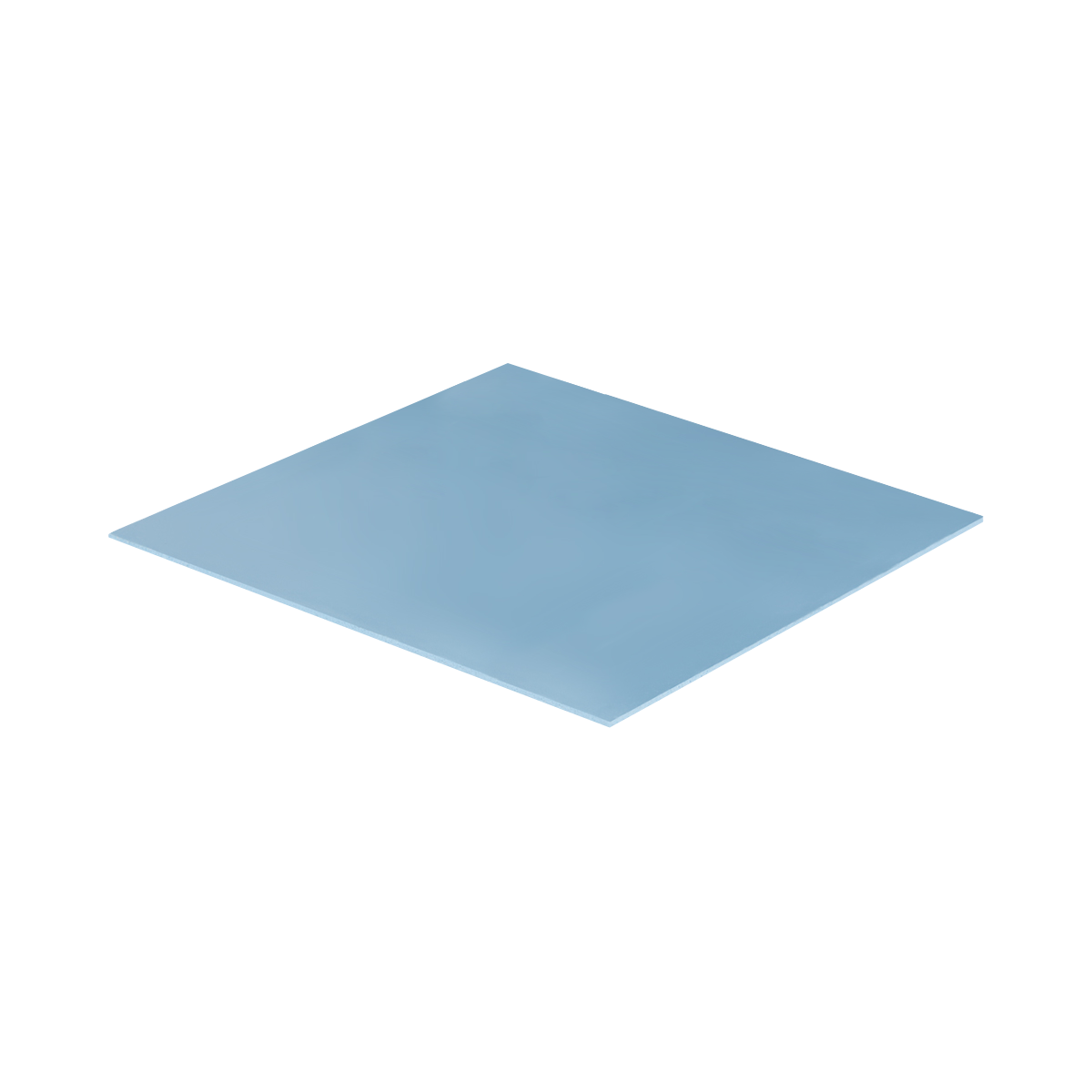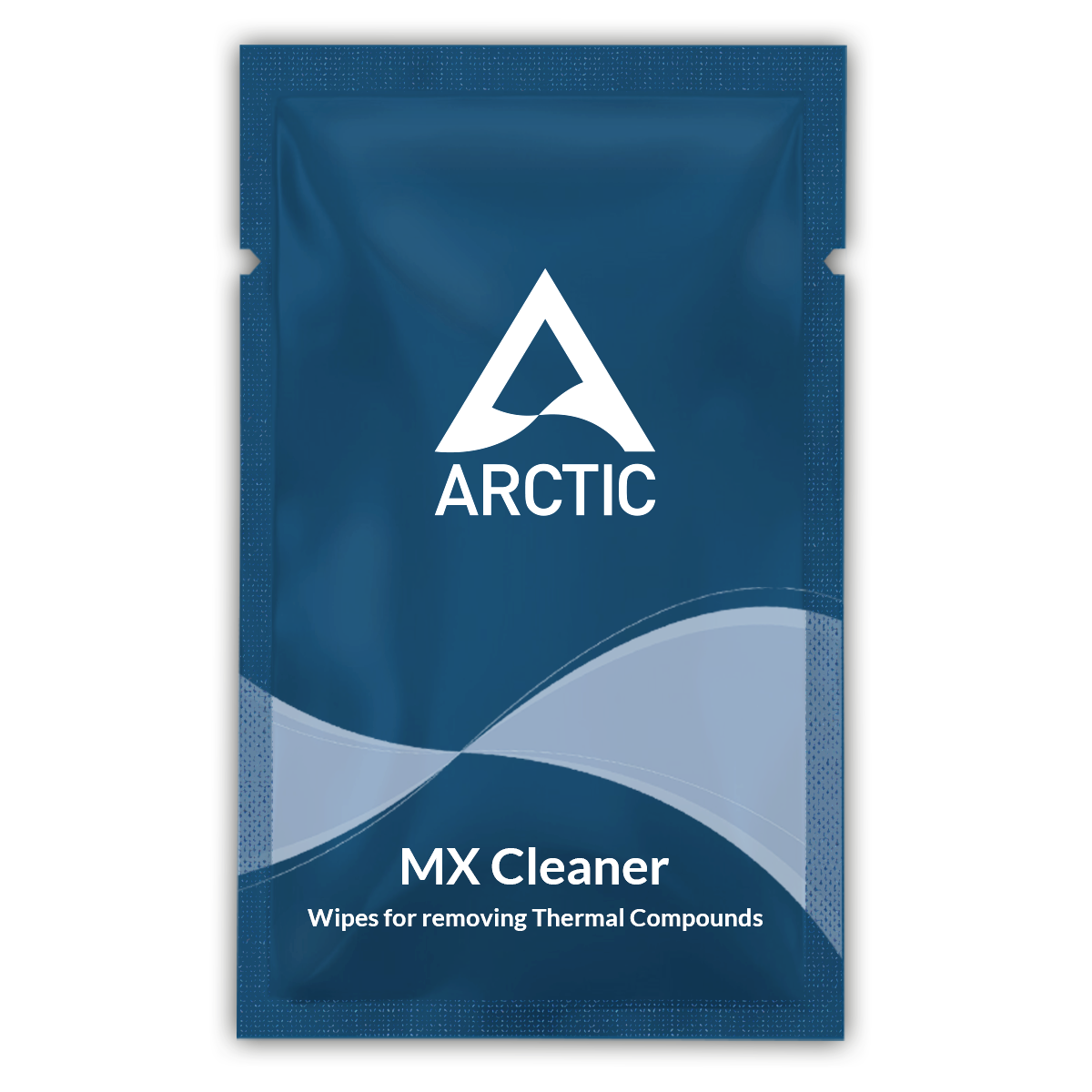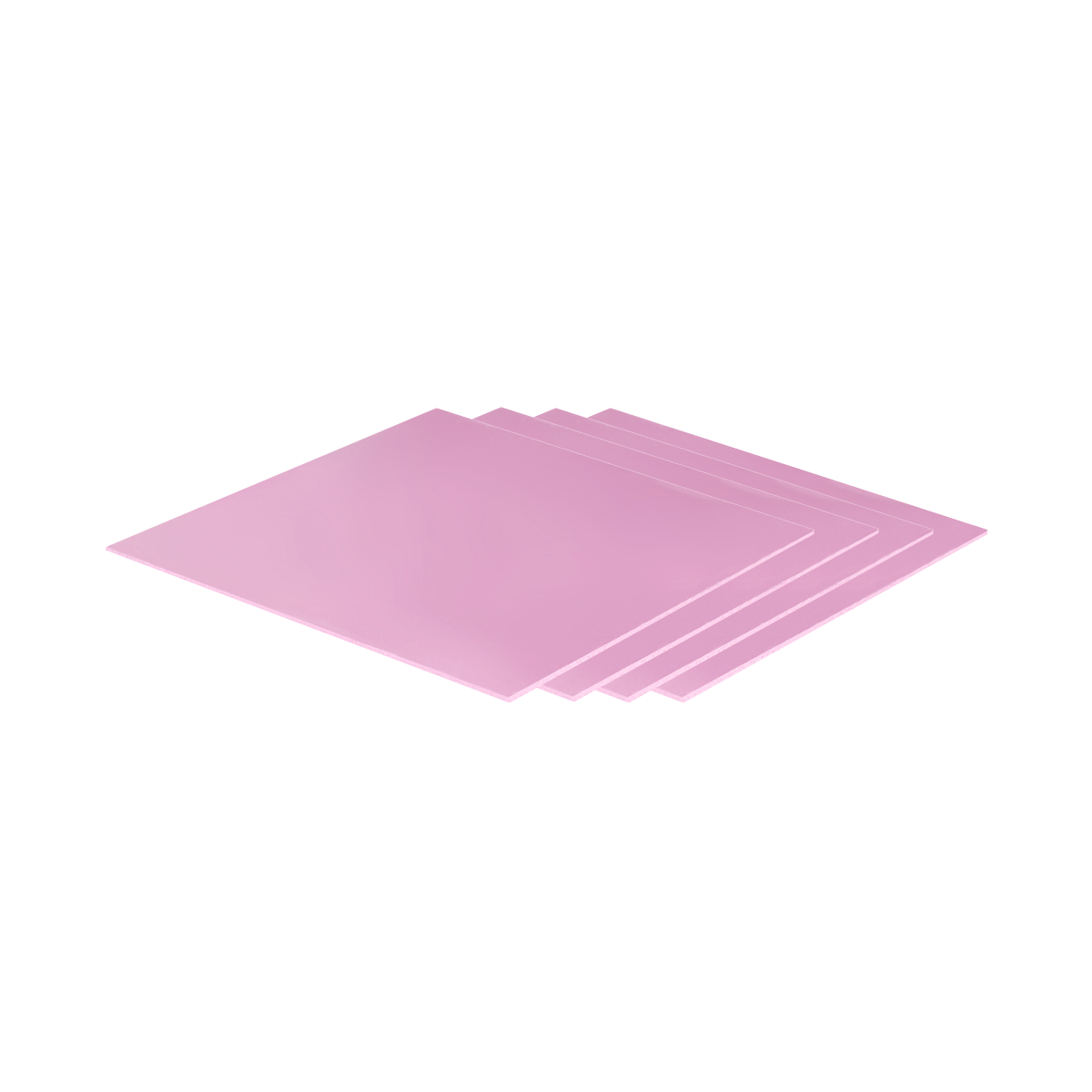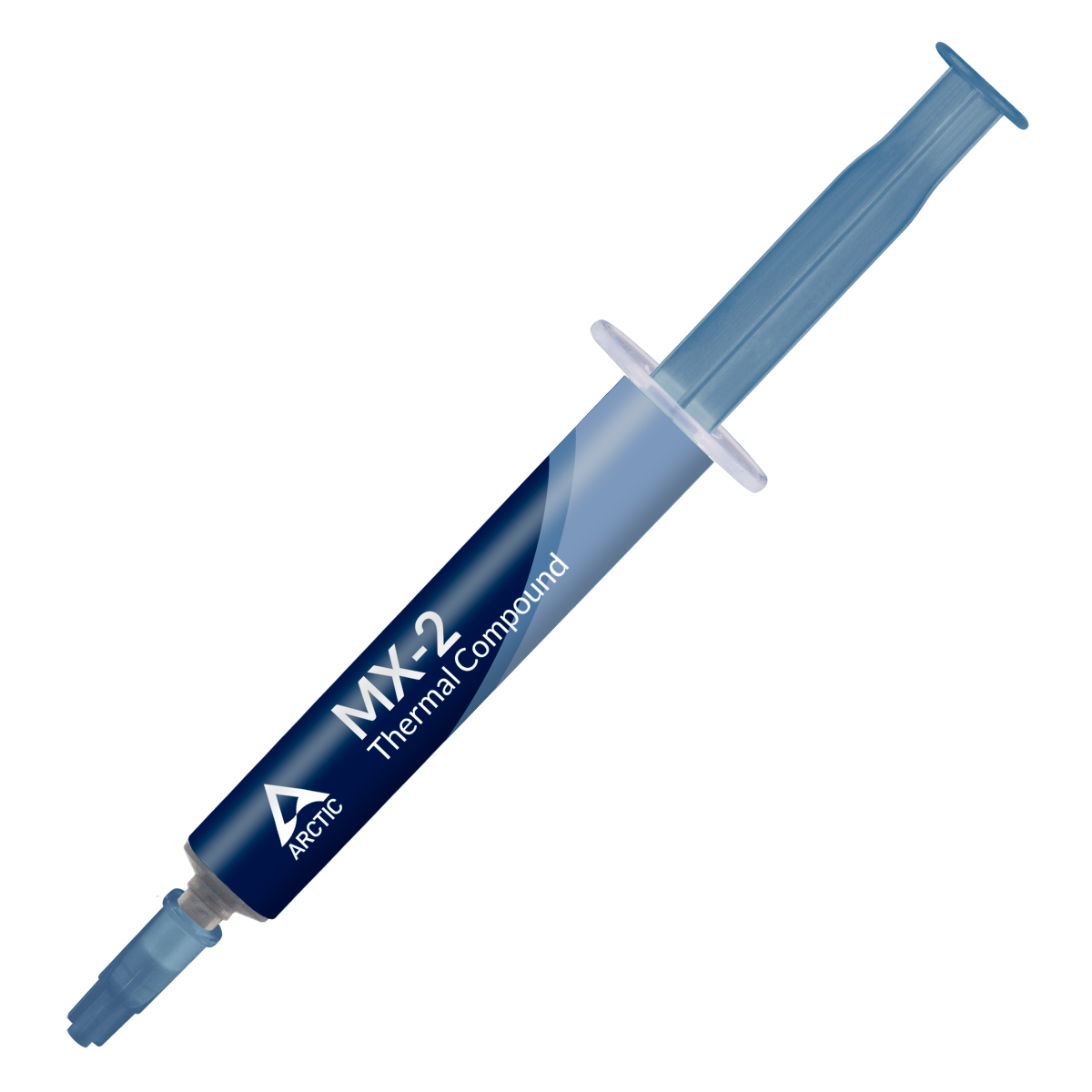€13.99
Heat Conducting Materials for CPU and GPU
1. What heat-conducting materials do we offer, and how do they differ?
2. Why doesn't ARCTIC communicate thermal conductivity values?
3. How do I apply thermal paste correctly?
4. What should you watch out for when using the thermal pads?
1. What heat-conducting materials do we offer, and how do they differ?
ARCTIC primarily offers two types of thermal interfaces: thermal paste and thermal pads.
Thermal Paste
The thermal paste consists of two basic components: a carrier substance and a heat-conducting filler, usually both non-conductive and non-capacitive. Metals like aluminum or copper are fabulous heat-conductors. Unfortunately, they are also electrical conductors, potentially capacitive, and thus the use of metal fillers is associated with risk.
Non-electrically conductive thermal paste offers a thermal conductivity of 1 to 4 W/mK. Much higher values are often advertised but are complete nonsense.
Despite its low thermal conductivity, the paste is the best choice if both surfaces are smooth and flat because the compound can be squeezed to a very thin bond line. More interesting is the thermal resistance of a TIM (thermal interface material), as this takes into account both the bond line thickness and the thermal conductivity.
Thermal Pads
Thermal pads generally conduct heat better than thermal paste (typically 1 to 7 W/mK). Due to their consistency, they are suitable for filling larger gaps where a very thin bond line is not possible.
Typically, harder pads conduct better than softer pads. Thus, harder pads are more suitable for high heat density application and softer pads are the better choice in case of large dimensional tolerance.

Delta T (Temp difference between CPU and Cooler) = Thermal Resistance x Performance (Energy to be transferred from CPU to Cooler)
2. Why doesn't ARCTIC communicate thermal conductivity values?
ARCTIC made a conscious decision not to specify any values for the thermal conductivity of its thermal paste and thermal pads because many manufacturers invent, artificially inflate or embellish this value. Thermal paste has a thermal conductivity of 1 to 4 W/mK. Values outside of this range, such as 12.5 W/mK, are at odds with the truth.
Many competitors quote values above 4 W/mK to suggest better performance. It often leads to false expectations and dissatisfied users.
ARCTIC offers its customers innovative thermal interface materials at the best possible price-performance ratio instead of relying on manipulated performance data.
3. How do I apply thermal paste correctly?
Instructions on how to apply thermal paste can be found here:
4. What should you watch out for when using the thermal pads?
Users should choose a soft enough thermal pad so that it adapts well to the surfaces (i.e., component and cooler) and thick enough so it fills the gap between the surfaces and gets between 10 % and 40 % compression. I.e., use a 1.0 mm pad to bridge a 0.7 mm gap.
General rules:
- The TIM layer should be as slim as possible.
- Layering different pads (or other TIM materials) is possible but should only be done if the irregularities or tolerances of both surfaces require it to bridge such a gap.
- If a big gap needs to be bridged, do this with a copper or aluminium plate and use a thin thermal pad on each contact surface. I.e., to bridge a 4 mm gap, use a 3.3 mm copper plate with two 0.5 mm thermal pads.








